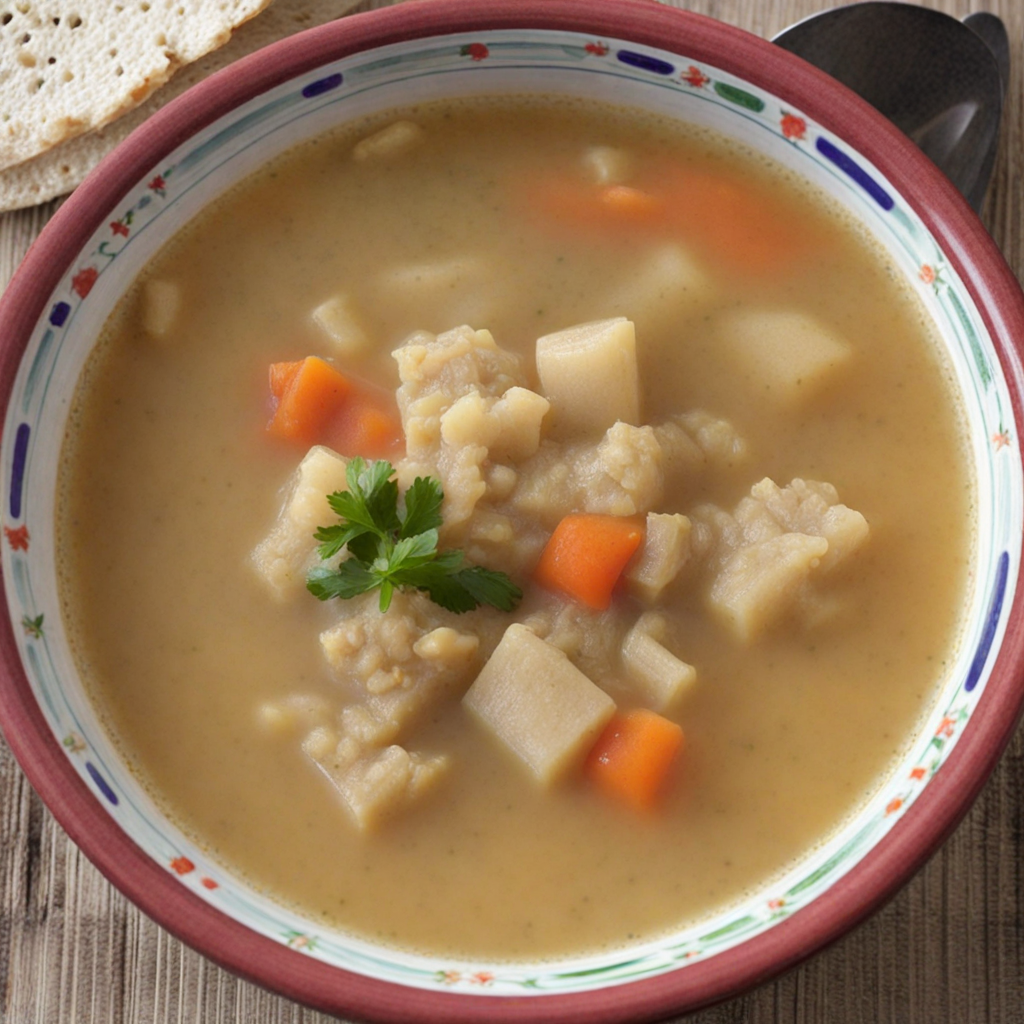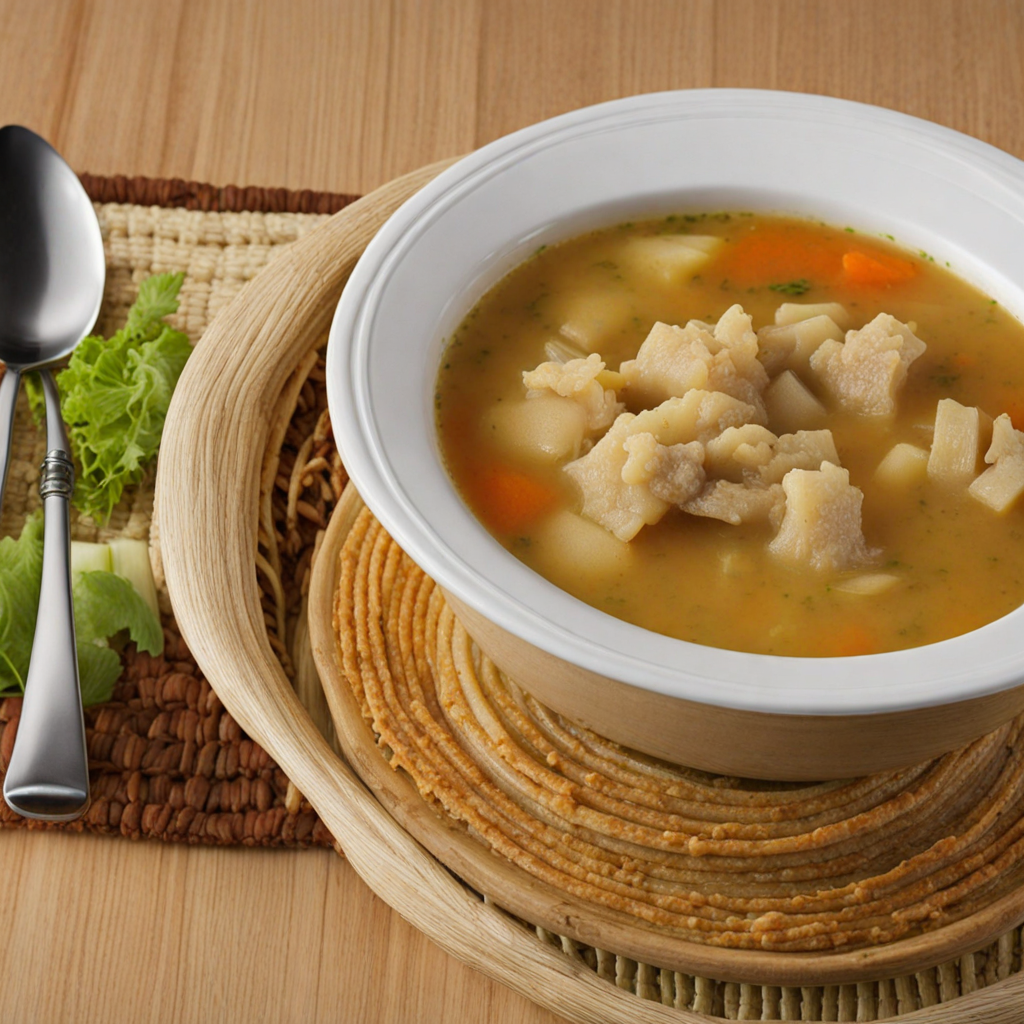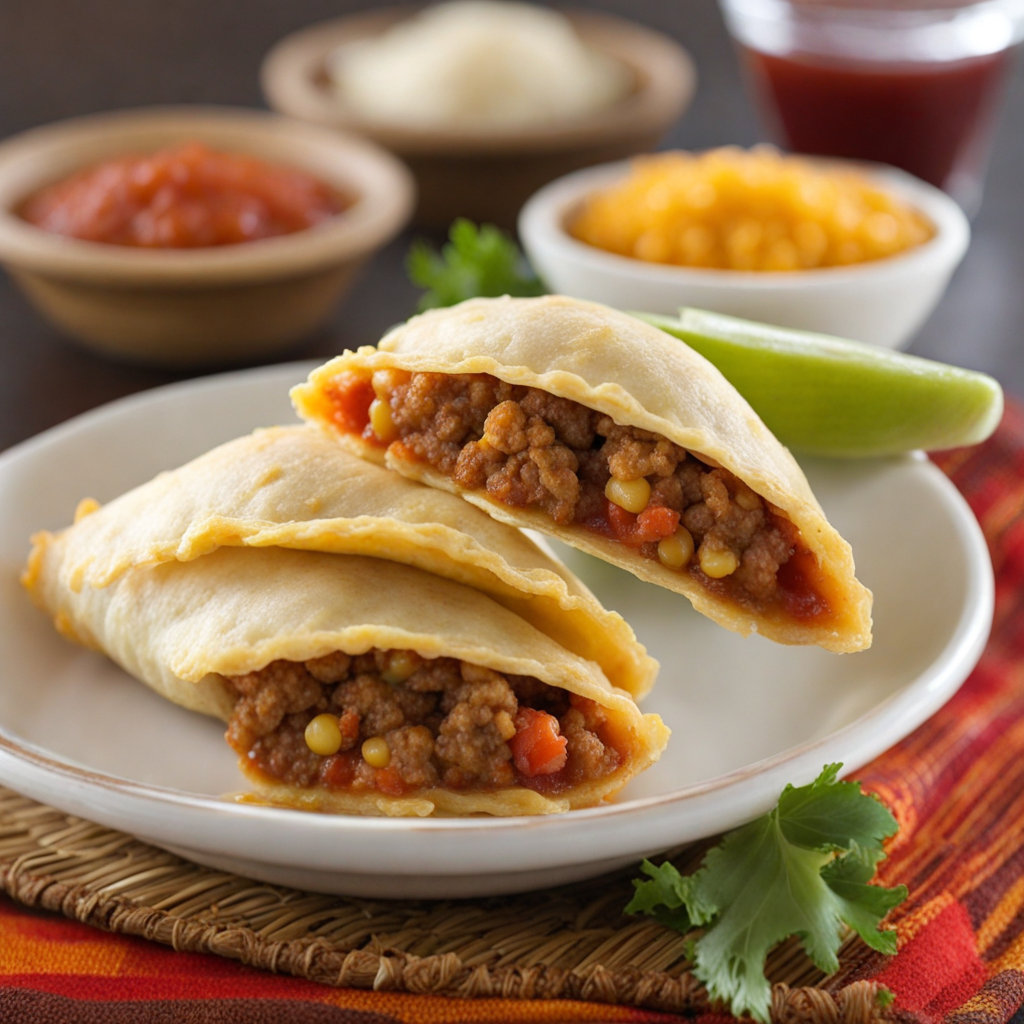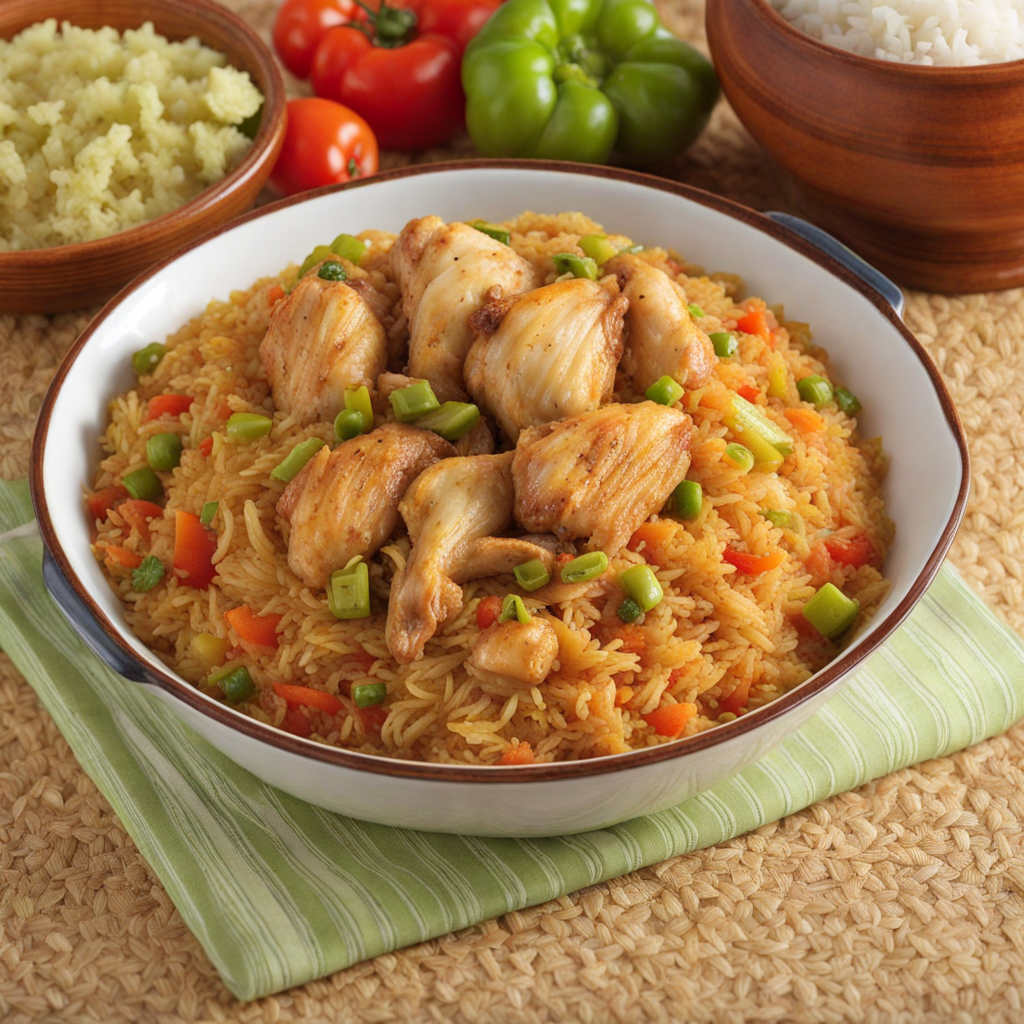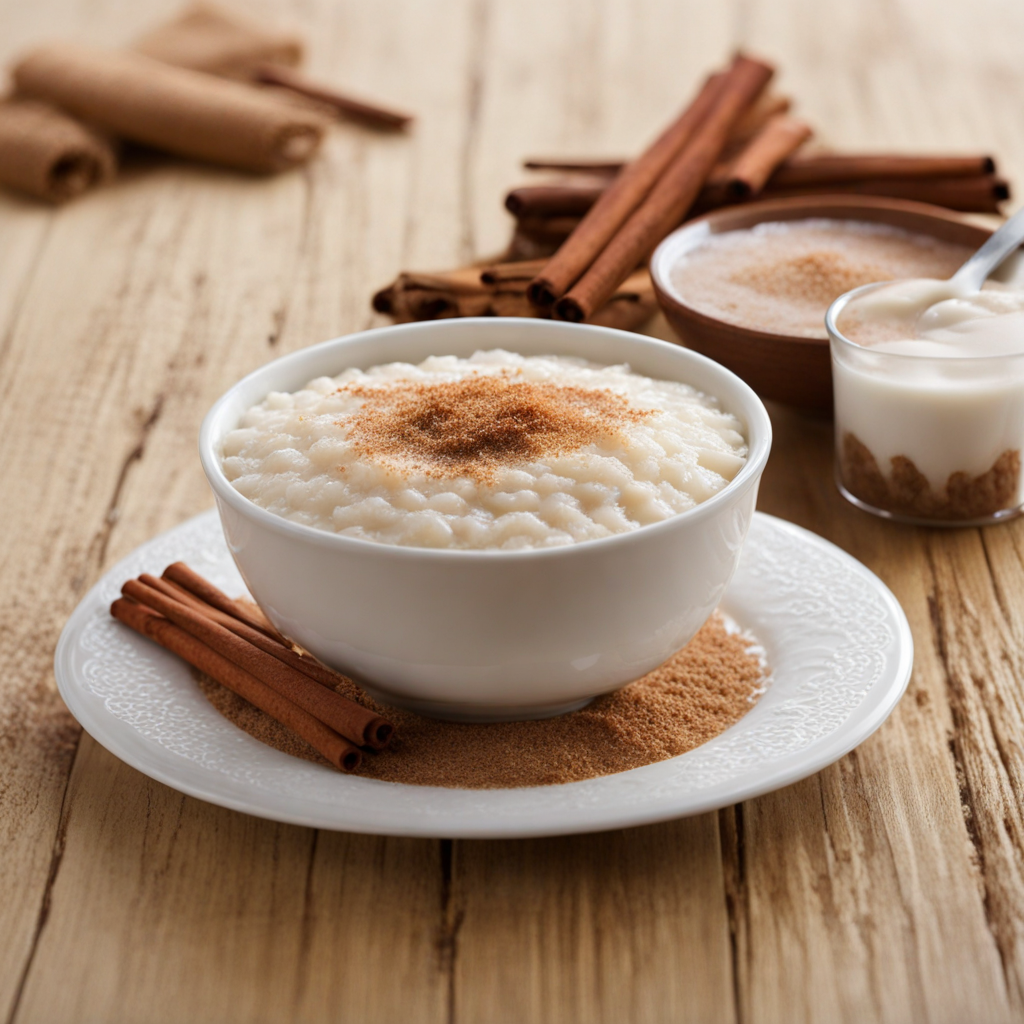Sopa de Mondongo
Sopa de Mondongo is a traditional Honduran dish that showcases the rich and hearty flavors of Central American cuisine. At its core, this soup is made with beef tripe, which is cleaned and cooked to achieve a tender texture that absorbs the flavors of the broth. The tripe is often accompanied by a medley of vegetables, including carrots, potatoes, and bell peppers, all simmered together in a robust stock seasoned with spices such as oregano, cumin, and garlic. The result is a comforting, aromatic soup that warms the soul with every spoonful. The vibrant colors and assortment of ingredients make Sopa de Mondongo not only a feast for the palate but also for the eyes. The soup is typically garnished with fresh cilantro, diced onions, and a squeeze of lime, which add a refreshing brightness to the dish. Some recipes include a touch of tomato or chili peppers for an extra layer of flavor and heat, making each bowl unique and reflective of the cook's personal touch. Served with warm corn tortillas or rice on the side, it’s a complete meal that embodies the essence of Honduran hospitality. Every bite of Sopa de Mondongo tells a story of tradition and culture, often enjoyed during family gatherings or special occasions. It's a dish that showcases the resourcefulness of using every part of the animal, turning tripe into a delicacy that delights many. The depth of flavors, combined with the hearty ingredients, makes Sopa de Mondongo a culinary adventure for anyone looking to explore the diverse and rich heritage of Honduran food.
How It Became This Dish
The Rich History of Sopa de Mondongo in Honduras Sopa de Mondongo, a hearty tripe soup, holds a cherished place in the culinary landscape of Honduras. This traditional dish is not only a staple in many Honduran households, but it also reflects the country's rich cultural tapestry, influenced by indigenous traditions, Spanish colonization, and the vibrant flavors of Central America. #### Origins of Mondongo The roots of Mondongo can be traced back to the broader tradition of consuming tripe and offal, which is prevalent in many cultures around the world. Tripe, which is the lining of a cow's stomach, has been used in various culinary traditions for centuries. The word 'mondongo' itself is believed to have Arabic origins, deriving from the word "maddan," which means 'stomach' or 'intestine.' This linguistic connection hints at a historical exchange of culinary practices, especially during the time of the Moors in Spain. When the Spanish colonizers arrived in Central America in the 16th century, they brought with them their own culinary traditions, including the use of offal. The indigenous people of Honduras, with their deep-rooted agricultural practices and knowledge of local ingredients, began to adapt these new influences into their own cooking. The result was a fusion of Spanish and indigenous elements, creating a unique Honduran version of tripe soup that we know today as Sopa de Mondongo. #### Ingredients and Preparation Sopa de Mondongo is characterized by its rich and savory broth, which is typically made from beef tripe, vegetables, and a blend of spices. The dish commonly includes ingredients such as potatoes, carrots, yucca, and corn, which not only enhance the flavor but also add heartiness to the soup. The use of cilantro, oregano, and lime juice provides a refreshing contrast to the rich, meaty flavors. Preparation is often a communal event, with families coming together to clean and cook the tripe, which requires meticulous attention to detail. The tripe must be thoroughly cleaned, boiled, and then cut into bite-sized pieces. The broth is simmered for hours, allowing the flavors to meld beautifully. This labor-intensive process reflects the dish's cultural significance, as it is often made for special occasions and family gatherings, emphasizing the importance of community in Honduran culture. #### Cultural Significance In Honduras, Sopa de Mondongo is more than just a dish; it is a symbol of heritage and community. Traditionally, it is served during celebrations, family reunions, and holidays, such as Christmas or Día de los Muertos (Day of the Dead). Its presence at these gatherings underscores its role in bringing people together, creating a sense of belonging and shared history. The dish has also become synonymous with comfort food, often enjoyed during times of illness or hardship, as its warming properties and nourishing ingredients provide solace. In many households, grandmothers or matriarchs are the keepers of the recipe, passing it down through generations, ensuring that the cultural significance of the dish is preserved alongside its flavors. #### Evolution Over Time As Honduras has evolved, so too has Sopa de Mondongo. The dish has adapted to changing tastes and the availability of ingredients. For instance, while traditional recipes may focus on beef tripe, modern interpretations have begun to explore variations that include pork or chicken, catering to diverse palates and dietary preferences. In urban areas, Sopa de Mondongo has also found its way into restaurants and street food stalls, making it accessible to a broader audience. Chefs have experimented with presentation and flavor, incorporating elements from other cuisines while still honoring the dish's traditional roots. This evolution reflects a dynamic food culture that embraces both heritage and innovation, ensuring that Sopa de Mondongo remains relevant in contemporary Honduran society. #### Regional Variations While Sopa de Mondongo is widely recognized across Honduras, regional variations exist that reflect local tastes and ingredient availability. For instance, in the coastal areas, seafood may be added to the traditional recipe, creating a distinct flavor profile that showcases the bounty of the ocean. Meanwhile, mountainous regions might incorporate locally grown vegetables, enhancing the dish's seasonal and regional character. These variations not only enrich the culinary landscape of Honduras but also highlight the country's diverse geography and agricultural practices. Sopa de Mondongo serves as a canvas for regional identity, allowing communities to express their unique heritage through food. #### A Dish for the Future As global culinary trends continue to evolve, Sopa de Mondongo stands at a crossroads of tradition and modernity. With the rise of food tourism, many travelers are seeking authentic culinary experiences, and dishes like Sopa de Mondongo offer a glimpse into the heart of Honduran culture. Food festivals and cultural events often feature this dish, allowing both locals and visitors to appreciate its rich history and delightful flavors. Moreover, as awareness of sustainable eating practices grows, there is an increasing appreciation for dishes that utilize all parts of an animal, including offal. Sopa de Mondongo, with its emphasis on tripe, exemplifies this approach, showcasing how traditional recipes can align with contemporary values of sustainability and resourcefulness. #### Conclusion Sopa de Mondongo is more than just a soup; it embodies the spirit of Honduras and its people. Its rich history, cultural significance, and adaptability over time make it a beloved dish that continues to bring joy and nourishment to countless families. As it evolves, Sopa de Mondongo remains a testament to the resilience of culinary traditions, bridging the past and the future while celebrating the vibrant flavors and heritage of Honduras. Whether enjoyed in a bustling restaurant or a quiet home, each bowl tells a story, inviting all who partake to savor the rich tapestry of Honduran culture in every delicious spoonful.
You may like
Discover local flavors from Honduras


